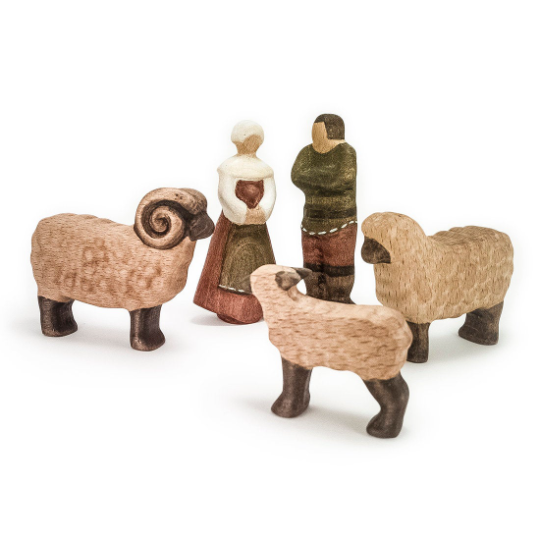Playing with toy animals has always been popular because it is engaging in so many ways. However, not all of these are obvious to either children or parents. Here are some ideas on how to help your children make the most of their toy sheep:
Although sheep are such ordinary animals, they make one of the most exciting ones to play with. When children learn about sheep rearing, they will have new scenarios to enact in play, and as sheep are so widespread, their parents, grandparents and teachers will be able to provide them with more and more facts, thus enriching their play.
Many people who have grown up in the countryside can share their own experiences and observations, while those who have grown up in the city could easily find information online. Here is a very interesting article. We also recommend some episodes of our favourite BBC series Victorian Farm (episodes 2, 5, 6) and Edwardian Farm (episode 10) – they could be watched online for free.
There is so much more children could do around the sheep topic.
First, they can read or listen to tales about sheep, and nowadays we are so blessed to have the Internet, where we could find stories about sheep from all over the world. Thus introducing children to an animal could branch out to introducing a child to a foreign culture.
Here are links to two beautiful Hungarian animated tales about sheep. The first one has Christian motifs, and the second one will make everyone laugh. The animation is slow with subdued colors, and the narration is in English, with a pleasant British accent.
The youngest children will enjoy the nursery rhyme Baa, Baa, Black Sheep and love to sing along.
We feel that spring is the best time to introduce you to one of our favourite books by zoologist and children books’ author Nicola Davies – A First Book of Nature (American edition – Outside Your Window: A First Book of Nature) – it is full of facts of nature presented through beautiful poems and prose poems and illustrated by one of our favourite artists, Mark Hearld. Here is a link to a very inspirational short video, in which Nicola Davies talks about how she wrote the book.
Second, if children are curious about nature, they might be fascinated to discover breeds and how they are adapted to local conditions (an opportunity to talk about climate and geography), and there are so many sheep breeds around the world.
Third, children would love to explore crafts related to sheep, for example felting or helping parents prepare some cheese or milk recipes.
Finally, parents and teachers might wish to explore folklore and mythology related to sheep, so we are adding a link to this interesting article.
